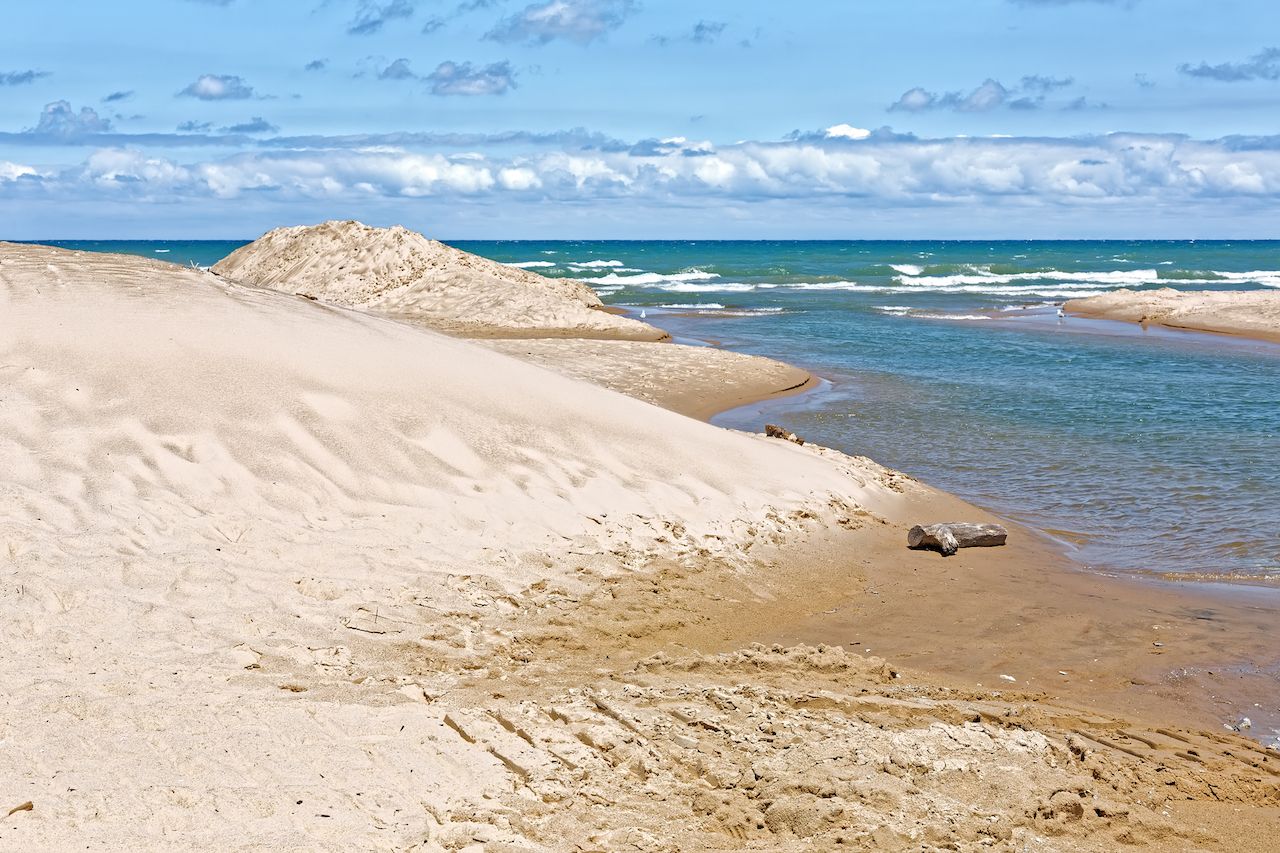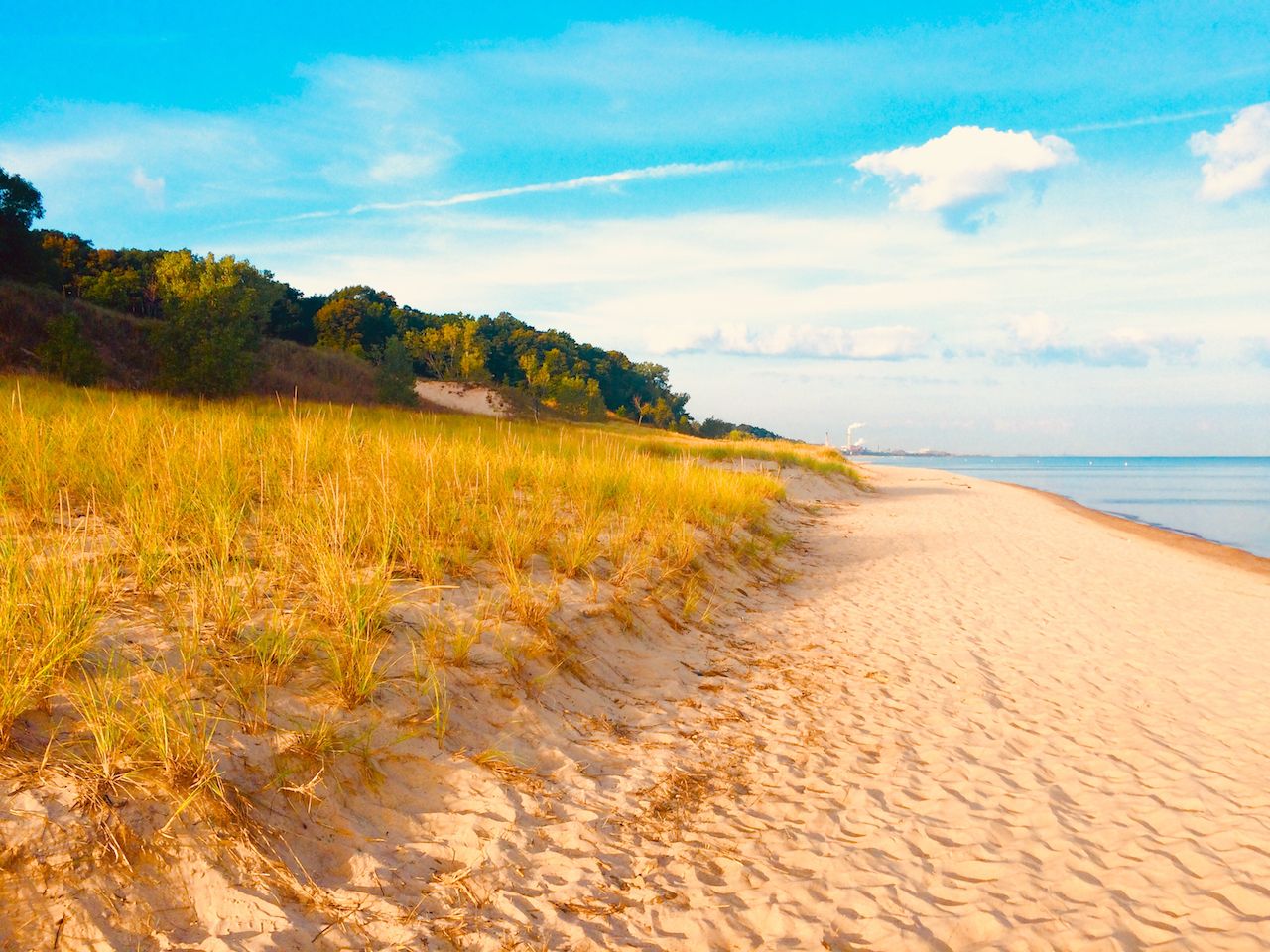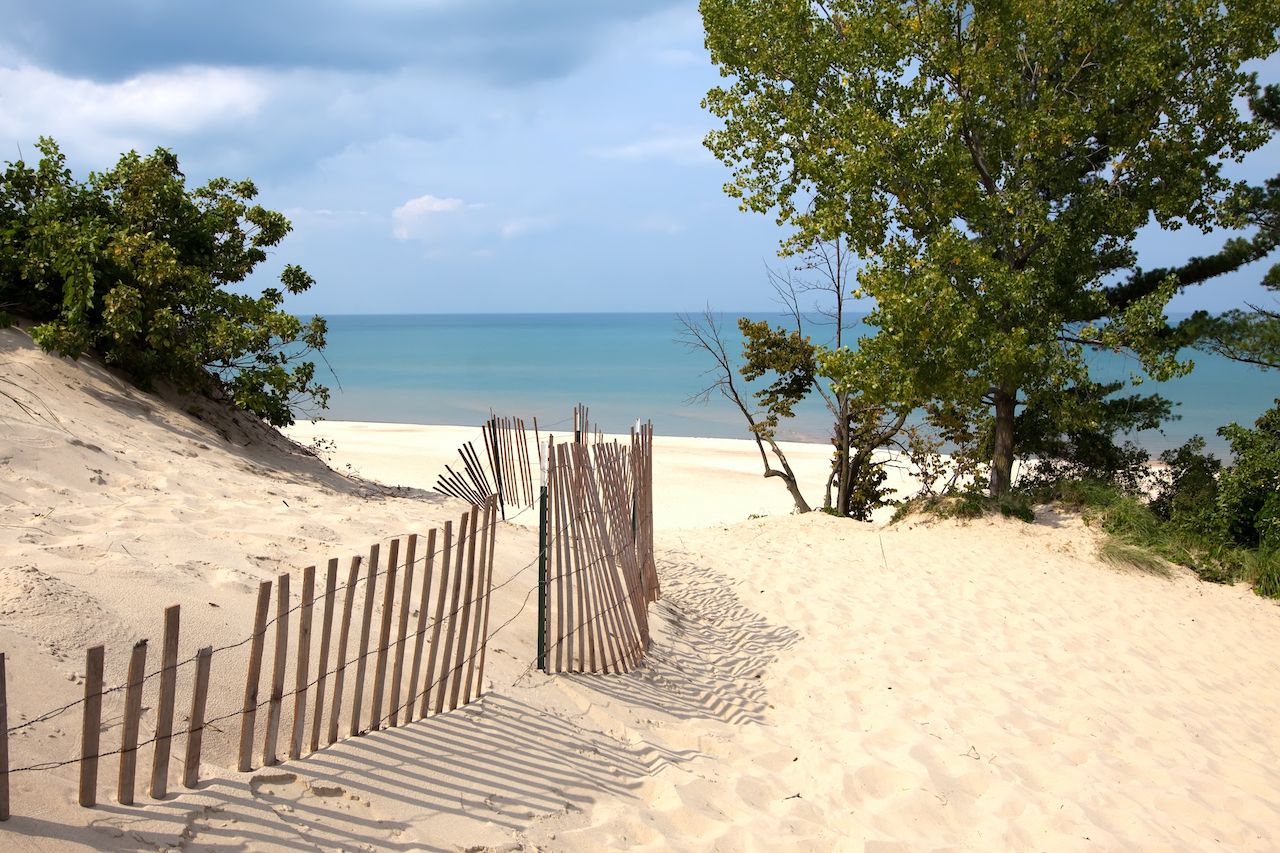A whopping 330 million nature lovers and adventure enthusiasts from all over the world visited US national parks in 2017. This summer, visitors will have a new park to explore, and they’ll have to venture to Indiana to get the newest stamp on their national parks passport. The National Park Service welcomed Indiana Dunes National Park to its roster on February 15, making it the country’s 61st national park. Just 50 miles from Chicago, the park is doable as a day trip or a multi-day adventure.

How to Plan the Ultimate Trip to Indiana Dunes National Park
Located in northwestern Indiana along the shore of Lake Michigan, Indiana Dunes is the first national park in the Hoosier State. Its status comes after more than a century of lobbying that began formally back in 1916 in Chicago. Since 1966, Midwesterners have known the 15,000-acre area as Indiana Dunes National Lakeshore. But with the signing of the omnibus appropriation bill in February 2018, the protected area finally obtained national park status.
The park is already Indiana’s most-visited site, with approximately 3.5 million visitors each year. That number is likely to grow as it attracts attention from beyond the Midwest, where most of its current visitors are located. Here’s what to know before you visit.
The park looks different every time you visit.

Photo: Delmas Lehman/Shutterstock
The park’s most impressive features are its towering sand dunes. Formed in the wake of glacial melt, the park’s namesake dunes can reach heights of almost 200 feet. Strong winds blowing off Lake Michigan continually shape and change the park’s 15 miles of shoreline, ensuring a slightly different experience each time you visit.
Beyond the dunes, though, the park is rich in biodiversity, not a quality you would generally associate with a state packed with seemingly endless cornfields. With 1,100 native species of plants, the park will change your mind about Indiana.
The warm months between the Memorial Day and Labor Day weekends are the best time to take full advantage of the park’s beach. But the park is a marvel to behold in any season. To see beautiful fall foliage along the Glenwood Dunes Trail, plan your visit in autumn. Or bundle up and explore the park on cross-country skis in winter and enjoy far fewer crowds. If you visit in spring, walk the Heron Rookery Trail for budding plant life.
You can hit the trail and scale the tallest dune.

Photo: Anna Westman/Shutterstock
Fifty miles of hiking trails snake through the park, offering a sample of the shoreline, the dunes, and the flora and fauna that call the region home. But be warned: Hiking in sand isn’t for the faint of heart. If you and your calves are up for the challenge, Indiana Dunes’ hiking routes will take you over the park’s formidable dunes, as well as through wetlands, prairies, and forests. Start with the West Beach Trail System, a 3.5-mile loop showcasing the best the park has to offer. The moderate to rugged route gives visitors a chance to get work up a sweat and then relax at the beach. Tack on the one-mile Dunes Succession Hike for stunning views of Lake Michigan.
The most famous dune is Mount Baldy, and on certain days you can actually ascend this completely barren sand dune to enjoy open views of the surrounding landscape. On summer weekends, rangers lead daytime and sunset hikes to the top. Otherwise, access is restricted in order to protect against erosion. There is also limited access to the nearby Pinehook Bog. Like Mount Baldy, you’ll need to join a ranger-led weekend hike in the summer to see this unique glacial depression and its diverse plant life.

Photo: GoldenField/Shutterstock
Other outdoor activities at Indiana Dunes National Park include biking, bird watching, boating, and fishing. In order to cast a line, you’ll need an Indiana Fishing License plus a stamp to catch trout and salmon. Kayaking and canoeing are popular on the park’s Little Calumet River.
Of course, swimming in Lake Michigan is one of the most beloved activities, but it’s important to be mindful of changing water conditions. Like an ocean, Lake Michigan can be calm one minute and dangerous the next. Options to lounge lakeside on the beach are aplenty, with one of the most popular spots being just down from Mount Baldy.
You can spend the night at the base of the dunes.

Photo: Delmas Lehman/Shutterstock
The park’s Dunewood Campground has 66 campsites and is equipped with restrooms and showers. It’s first-come, first-served, and the fee is $25 per night. Open April 1 through November 1, the campground is just 1.5 miles south of Lake View Beach. Watch the sunset over Lake Michigan, then head back to Dunewood for s’mores and ghost stories around the campfire. Most public spaces within the park are open from 6:00 AM to 11:00 PM year round. In summer, the Visitors Center is open daily 8:00 AM to 6:00 PM and from 8:30 AM to 4:30 PM at other times of year.
If you don’t want to camp, several other accommodations around Indiana Dunes don’t require sleeping in a tent. In nearby Chesterton, At Home in the Woods is a cozy, nature-inspired bed and breakfast that prioritizes eco-friendly practices and is adjacent to wooded acreage to explore. Beyond that, everything from bed and breakfasts to hotels and motels are available in Porter, Portage, Michigan City, Chesterton, and Valparaiso.
Getting to Indiana Dunes National Park
If you’re flying to the Midwest, the airports nearest Indiana Dunes are South Bend International in South Bend, about 45 miles away, and both Midway and O’Hare in Chicago. From Indianapolis, the drive is about 2.5 hours. The park’s main entrance is just off I-94 and is easily accessed from the Indiana Toll Road. Take the exit for IN-49 and you’ll pass right by the visitors center where you can park, head in to grab a map, and plan the day. The park fee is just $6 per vehicle and $80 for a season pass.